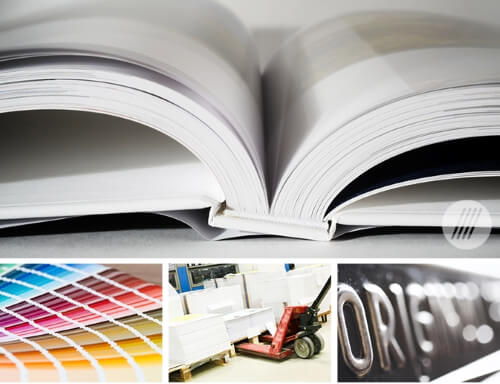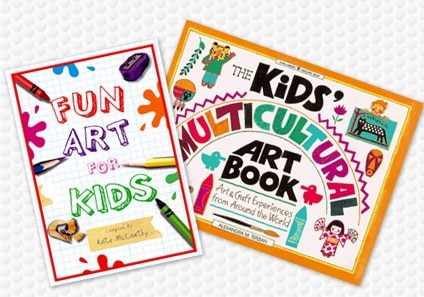Seven Printing Techniques That Bring Your art book to Life
Seven Printing Techniques That Bring Your art book to Life
Blog Article
Recognizing the Process Behind Top Quality Art Book Printing for Art Enthusiasts
When it comes to premium art book printing, understanding the complexities of the process can elevate your admiration for the final product. As you check out the numerous elements of art book printing, you'll reveal insights that could transform your perspective on art preservation and discussion.
The Importance of Paper Choice in Art Book Printing
When it comes to art book printing, the choice of paper can make or damage the end product. You desire your art work to beam, and the right paper boosts shade vibrancy and detail. Think about elements like weight, appearance, and finish; these aspects substantially affect just how visitors view your work.
For circumstances, a much heavier stock shares quality and resilience, while a distinctive finish can add depth to photos. Smooth paper is outstanding for detailed reproductions, allowing great lines and refined shades to appear crisp.
Don't neglect regarding the paper's illumination; a brighter sheet can help shades pop, making your art much more distinctive. You'll additionally intend to think about exactly how the paper interacts with inks and whether it can handle the printing procedure without contorting or bleed-through. Inevitably, choosing the ideal paper establishes the stage for your art, ensuring it records the audience's interest just as you imagined.
Picking the Right Inks for Lively Recreations
Selecting the appropriate inks is simply as important as selecting quality paper to accomplish vibrant reproductions in your art book. When you're publishing artwork, you want colors that pop and precisely represent the original piece. Choose for inks with a high pigment concentration; these tend to produce richer and extra saturated shades.
You might consider making use of archival inks, which resist fading with time, ensuring your art book remains as striking as the day it was published. If you're dealing with pictures or electronically created art, pigment-based inks can offer a bigger color gamut, boosting information and depth.
Don't ignore the finish! Matte and shiny inks can substantially change the appearance of your artwork, so assume about the appearance you're aiming to achieve - art book. Eventually, the ideal ink option enhances your paper option, creating a sensational aesthetic experience for your visitors
The Function of Shade Management in Publish Quality
Shade management plays a vital function in accomplishing high print top quality for your art book. It ensures that the colors you see on your screen convert properly to the printed web page. Without reliable shade management, your vivid art work may show up dull or altered, threatening your innovative vision.
To begin, adjust your display regularly. This action helps maintain consistent color depiction. Next off, utilize color accounts tailored for your printer and paper kind. These accounts lead the printer in duplicating shades accurately, lowering disparities in between digital and published versions.
When you prepare your data, take into consideration making use of a shade room like Adobe RGB or CMYK, depending upon your printer's specs. Always proof your job, also; a test print can expose any potential shade problems before the final run. By focusing on color administration, you secure the honesty of your art, guaranteeing your audience experiences it as you intended.

Recognizing Different Binding Strategies
Achieving the best seek your art book goes beyond shade monitoring; binding techniques additionally play a substantial function in its overall discussion and longevity. You have numerous options to examine, each with its very own special qualities.
If you're aiming for a professional feeling, instance binding supplies a durable choice with a hard cover, perfect for showcasing your artwork. On the various other hand, ideal binding gives an adaptable spinal column while keeping costs down, making it a popular choice for softcover publications.
Spiral binding enables your art book to lay flat, which is fantastic for presenting images without blockage. Saddle stitching is suitable for smaller pamphlets, giving a tidy surface without the bulk.
Ultimately, the binding method you pick need to mirror your artistic vision and exactly how you desire readers to engage with your job. See to it to evaluate these choices meticulously to accomplish the most effective end result for your job.
The Effect of Print Dimension and Format on Discussion
While the selection of print size and format may seem secondary to content, they substantially affect just how your art work is perceived. The measurements of your prints can either enhance or reduce the impact of your pieces. Larger prints can draw customers in, permitting them to appreciate complex details, while smaller sized layouts might call for more intimate involvement.

Conservation Methods for Lasting Art Books
To guarantee your art publications stand the test of time, it's essential to apply effective preservation strategies. Usage acid-free storage space boxes or safety sleeves to shield them from dust and physical damage.
When handling your publications, always clean home your hands or put on cotton gloves to stay clear of oils and dirt transferring onto the web pages. Prevent bending or wrinkling the spinal columns; rather, use book sustains when showing them.
For added protection, think about spending in archival-quality products for any repair work or improvements. On a regular basis inspect your collection for indications of wear or damage, addressing problems without delay. By adhering to these simple approaches, you can guarantee your art publications stay lively and easily accessible for several years ahead, protecting their beauty and value for future generations.
Working together With Printers for Optimal Results
When you're ready to print your art book, choosing the right printer is necessary to accomplishing your vision. Clear interaction regarding your expectations and demands will help guarantee that both you and the printer are on the exact same web page. Allow's discover just how to make this collaboration as smooth and effective as possible.
Selecting the Right Printer

Efficient Interaction Strategies
Efficient communication is important for turning your art book vision right into reality, especially when teaming up with printers. art book. Beginning by plainly detailing Homepage your project's objectives, including style aspects, favored materials, and any type of particular printing methods. Do not wait to share your motivations and referrals; this assists the printer recognize your aesthetic
Establish routine check-ins to discuss progression and attend to any kind of inquiries. Use visuals, like mock-ups or examples, to convey your concepts better. Be open to comments, as printers commonly have important understandings that can enhance your click over here task. Finally, preserve a favorable connection by being respectful and appreciative of their competence. This cooperation will certainly guarantee that your art book satisfies your assumptions and shines in its final form.
Often Asked Questions
What Prevail Blunders to Avoid in Art Book Printing?
When publishing your art book, stay clear of usual errors like inadequate resolution photos, inaccurate color profiles, and neglecting page format. Don't neglect to proofread and double-check details to validate your last product meets your assumptions.
Just How Does Digital Printing Differ From Traditional Printing Techniques?
Digital printing utilizes electronic documents to produce prints directly, permitting for quicker turn-around and personalization. On the other hand, traditional methods include physical plates, which can be lengthy and less flexible for tiny runs or distinct styles.
What Is the Normal Turn-around Time for Art Book Printing?
The regular turnaround time for art book printing differs, however you can anticipate it to take anywhere from a few weeks to numerous months. Elements like complexity, quantity, and printing approach all influence this timeline.
Can I Publish a Restricted Edition Art Book Financially?
You can print a restricted edition art book economically by choosing economical products, maximizing print runs, and using electronic printing options. Cautious planning and budgeting will aid you accomplish top quality without spending too much.
What Are the Ecological Considerations in Art Book Printing?
When considering art book printing, you ought to think concerning green materials, lasting inks, and energy-efficient processes (art book). Selecting regional printers can additionally minimize your carbon footprint, making your project both lovely and ecologically responsible
Report this page